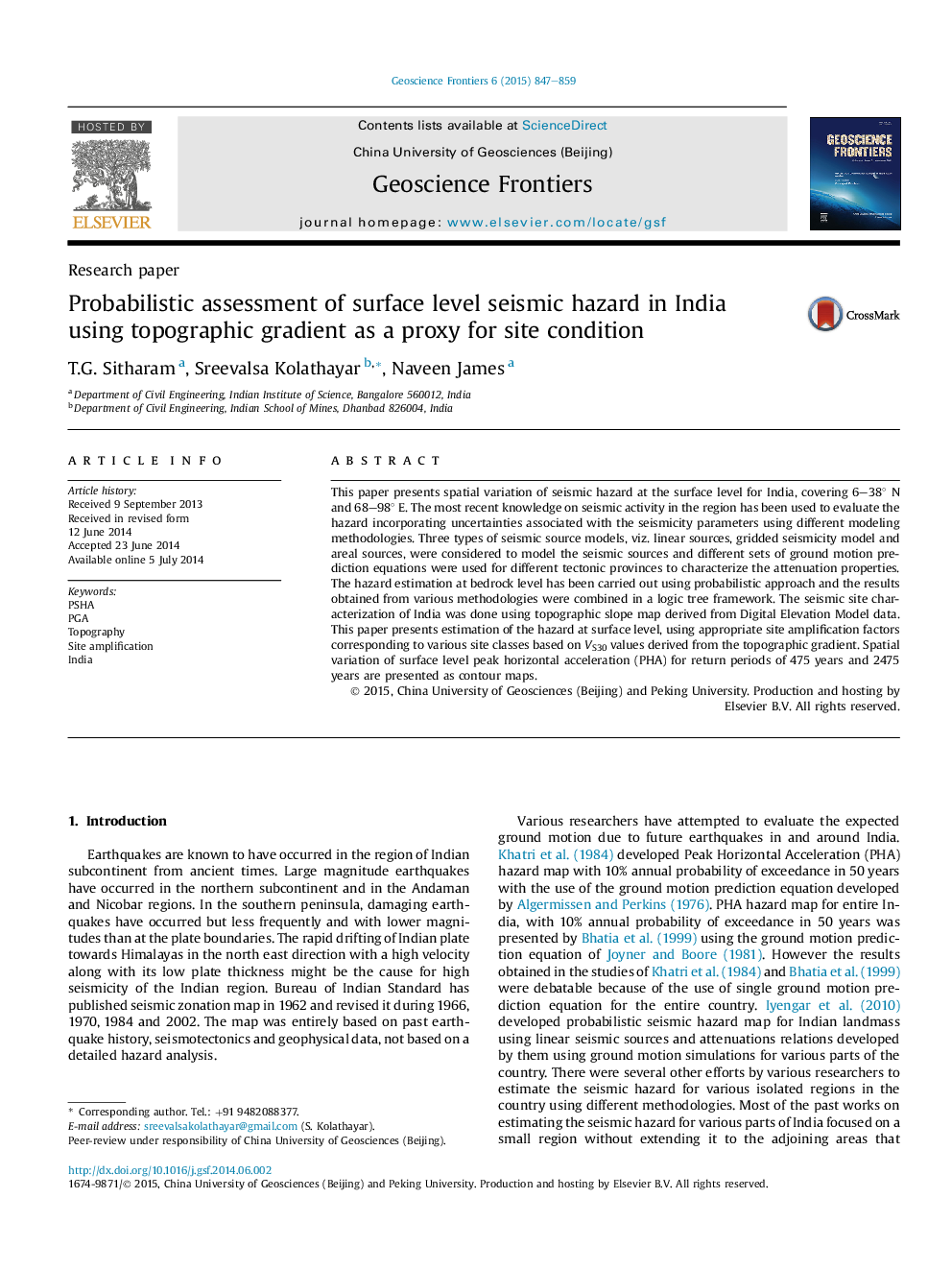| Article ID | Journal | Published Year | Pages | File Type |
|---|---|---|---|---|
| 4681493 | Geoscience Frontiers | 2015 | 13 Pages |
•Peak Ground Acceleration values due to possible future earthquakes.•Different attenuation relations used to estimate ground motion.•Seismic site characterization using topographic slope map.•Surface level peak horizontal acceleration evaluated.
This paper presents spatial variation of seismic hazard at the surface level for India, covering 6–38° N and 68–98° E. The most recent knowledge on seismic activity in the region has been used to evaluate the hazard incorporating uncertainties associated with the seismicity parameters using different modeling methodologies. Three types of seismic source models, viz. linear sources, gridded seismicity model and areal sources, were considered to model the seismic sources and different sets of ground motion prediction equations were used for different tectonic provinces to characterize the attenuation properties. The hazard estimation at bedrock level has been carried out using probabilistic approach and the results obtained from various methodologies were combined in a logic tree framework. The seismic site characterization of India was done using topographic slope map derived from Digital Elevation Model data. This paper presents estimation of the hazard at surface level, using appropriate site amplification factors corresponding to various site classes based on VS30 values derived from the topographic gradient. Spatial variation of surface level peak horizontal acceleration (PHA) for return periods of 475 years and 2475 years are presented as contour maps.
Graphical abstractFigure optionsDownload full-size imageDownload as PowerPoint slide
